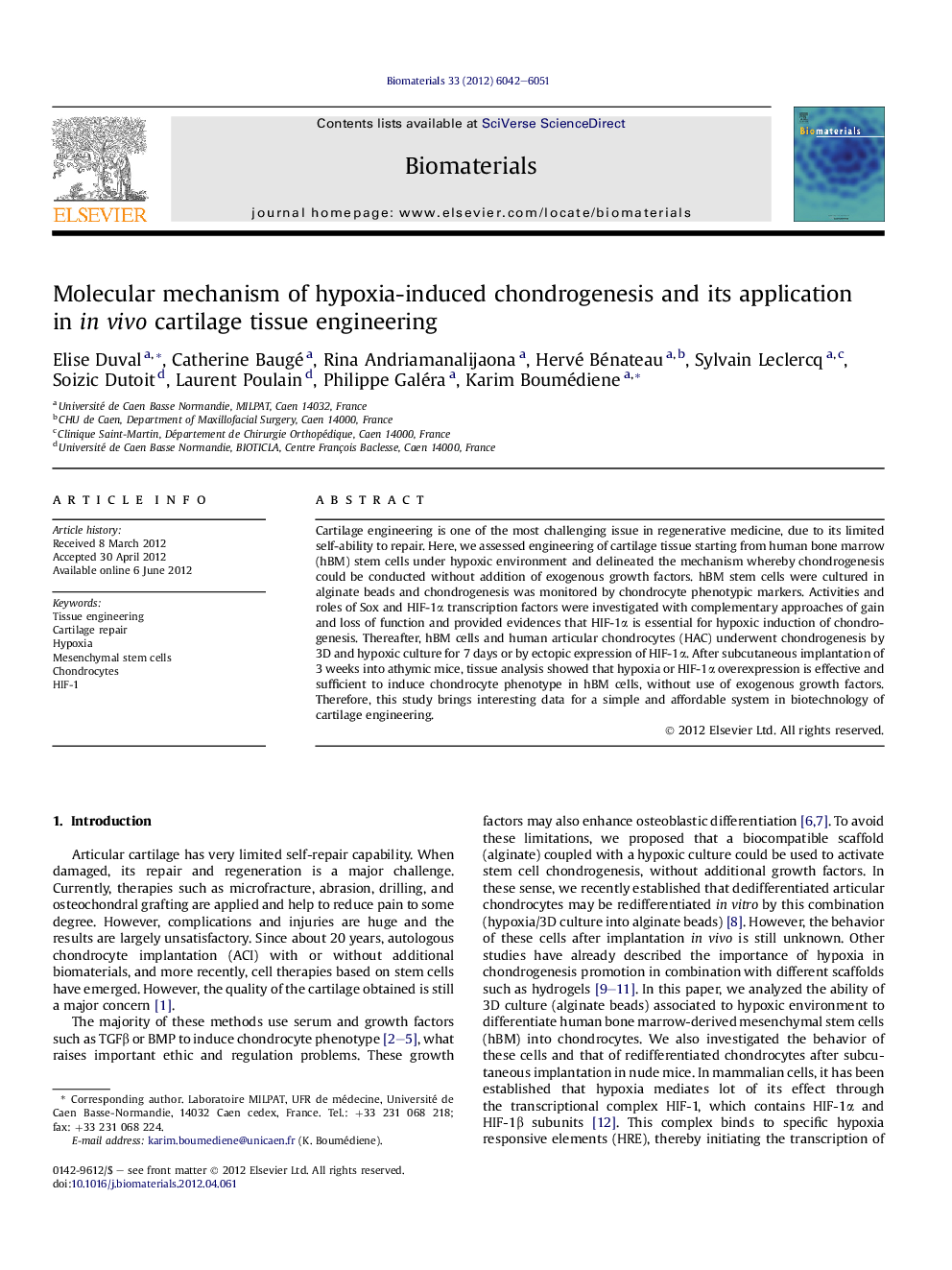| Article ID | Journal | Published Year | Pages | File Type |
|---|---|---|---|---|
| 6702 | Biomaterials | 2012 | 10 Pages |
Cartilage engineering is one of the most challenging issue in regenerative medicine, due to its limited self-ability to repair. Here, we assessed engineering of cartilage tissue starting from human bone marrow (hBM) stem cells under hypoxic environment and delineated the mechanism whereby chondrogenesis could be conducted without addition of exogenous growth factors. hBM stem cells were cultured in alginate beads and chondrogenesis was monitored by chondrocyte phenotypic markers. Activities and roles of Sox and HIF-1α transcription factors were investigated with complementary approaches of gain and loss of function and provided evidences that HIF-1α is essential for hypoxic induction of chondrogenesis. Thereafter, hBM cells and human articular chondrocytes (HAC) underwent chondrogenesis by 3D and hypoxic culture for 7 days or by ectopic expression of HIF-1α. After subcutaneous implantation of 3 weeks into athymic mice, tissue analysis showed that hypoxia or HIF-1α overexpression is effective and sufficient to induce chondrocyte phenotype in hBM cells, without use of exogenous growth factors. Therefore, this study brings interesting data for a simple and affordable system in biotechnology of cartilage engineering.
